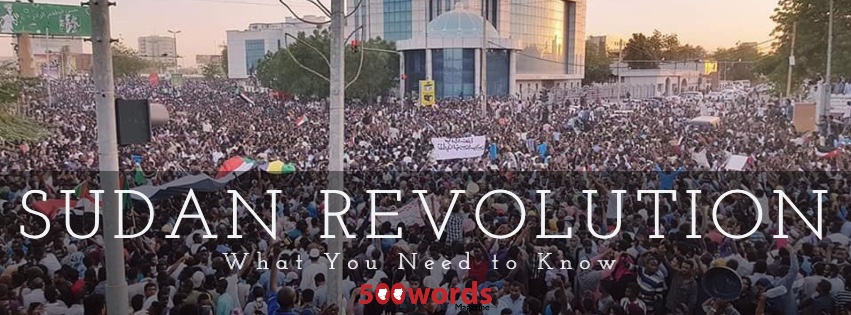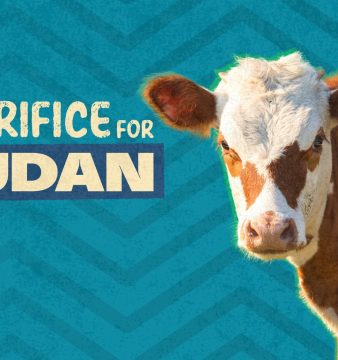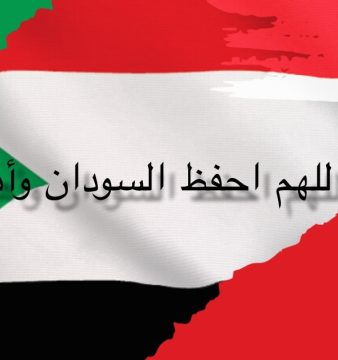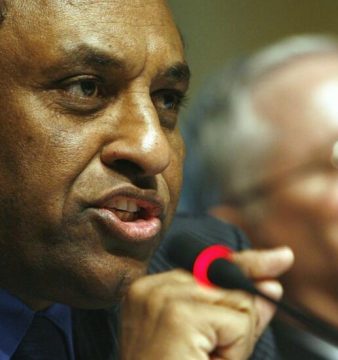Everything You Need to Know About the Sudan Revolution
In addition to #BlueForSudan trending, bringing the world’s attention to the ongoing Sudan revolution, anyone who has been reading or watching the news the last few months will know of the seven-month-long Sudan revolution or uprising.
However, if you still have questions, here is your guide to everything you need to know about the ongoing Sudan revolution:
When did the revolution begin?
Anti-government protests have been taking place in Sudan since December 2018 with hundreds to thousands of protesters marching on the streets across Sudan. The protests began in El-Damazin on 13 December 2018 but protests in Atbara on 19 December 2018 became recognised as the impetus of the revolution with the burning of the National Congress Party (NCP) building.
How and why did the revolution begin?
Series of demonstrations broke out due to rising costs of living and deterioration of economic conditions. The protests were specifically triggered by a hike in prices of basic commodities such as bread, and by fuel and cash shortages. Local officials had removed a wheat subsidy and the price of bread tripled overnight. The protests quickly turned to calling for the downfall of former Sudan president Omar Al Bashir and his regime. Al Bashir was then ousted in a military coup d’état on 11 April 2019, which brought the currently ruling Transitional Military Council (TMC) to power. Government forces have responded to protests with live ammunition, rubber bullets and tear gas.
Protests have also been taking place abroad where Sudanese diasporas organised protests in cities such as Washington DC, London, Ireland, Paris, Dublin, Belfast, Rome, Vienna, Warsaw, Copenhagen, Helsinki and more.
The biggest anti-government protest to date took place on 6 April 2019 when the Sudanese Professionals Association (SPA) called on a million to march towards the headquarters of the Sudanese Armed Forces (SAF), which led to the monthslong mass sit-in in Al Qeyada in front of the HQ of SAF. After the ousting of Al Bashir, protesters continued to camp there, demanding for a civilian-led interm government, until the Khartoum massacre took place on 3 June 2019.
Who is leading the revolution?
The Sudanese Professionals Association (SPA), an umbrella association of 17 different Sudanese trade unions of doctors, journalists, teachers, lawyers and more, has been leading the ongoing anti-government protests since December 2018, due to the rising cost of living in Sudan. First, the protests began against Al Bashir and his regime. Now, the SPA has been calling on protests, demanding the step down of the TMC and its leaders as well as calling for an interim civilian government to be in power.
Since the ousting of Al Bashir on 11 April 2019, the Forces for Freedom and Change (FFC) has been leading negotiations with the TMC, regarding an interim civilian government before general elections take place in 2022.
What are the casualties?
Since the protests began in December 2018, at least 250 people have been killed. Government forces such as National Intelligence and Security Service (NISS) and Rapid Support Forces (RSF) have used live ammunition, rubber bullets, tear gas and baton or truncheon to disperse protests. Hundreds have been critically injured and at least 1,000 arrested. Protesters have been brutally beaten and sexually abused. Hospitals, homes and universities have been raided and looted.
The deadliest attack of the Sudan revolution took place on 3 June 2019 (the 29th day of the holy month of Ramadan) when Rapid Support Forces (RSF) and other paramilitary forces raided the monthslong mass sit-in in Al Qeyada in front of the HQ of SAF, killing more than 100 people and injuring at least 300. At least 40 bodies were pulled of the Nile River where paramilitary forces disposed of dead bodies. In addition, residents reported rapes and robberies at the hands of paramilitary forces. Others have been arrested, sexually abused, brutally beaten and even urinated on.
What has been accomplished so far?
- On 22 February 2019, Al Bashir delivered a televised broadcast speech at the Presidential Palace, declaring a nationwide year-long state of emergency. Countering protests calling for his removal from office, Al Bashir also announced that he dissolved the cabinet, and as well as federal and state governments throughout the country. He also announced postponing constitutional amendments that would allow him to run for another term in a presidential election in 2020.
- On 11 April 2019, Al Bashir was ousted in a military coup d’état, which brought the Transitional Military Council (TMC) to power. He has been detained at the presidential residence under heavy guard until 17 April 2019 when the TMC announced Al Bashir has been moved Kobar maximum security prison in Khartoum.
- After the ousting of Al Bashir on 11 April 2019, formerly defense minister and an ally of Al Bashir, Ahmed Awad Ibn Auf, took power on 11 April as head of Sudan and the TMC but stepped down on 12 April after protests intensified and transferred power to the current head of TMC, Abdel Fattah Al Burhan.
- Following the Khartoum massacre on 3 June 2019, the African Union (AU) suspended Sudan and called for civilian-led government.
- Protests still continue, demanding the immediate transition to a civilian government. Protesters are now on a nationwide civil disobedience campaign.
- *Update: On 17 July 2019, the ruling TMC and FFC signed an agreement to establish a joint 11-member military-civilian sovereign council that will rule the country by rotation for a period of at least three years and three months.
- *Update: On 3 August 2019, the ruling TMC and FFC agreed on a constitutional declaration, outlining the powers and the relationships between the branches of the transitional government for the three-year transition to elections.
- *Update: On 17 August 2019, the TMC and FFC hold ceremonial and formal signing of the constitutional declaration, paving the way for a joint military and civilian sovereign council.
Where does the revolution stand now?
The SPA have called on a nationwide civil disobedience campaign beginning on Sunday, 9 June 2019, which will continue until the TMC transfers power to civilian government.
The call for the open-ended nationwide civil disobedience campaign came on 4 June, a day after the Khartoum massacre. Almost all internet and phone services have been cut off since the massacre.
However, after three days of civil disobedience, the Forces for Freedom and Change (FFC) suspended the nationwide civil disobedience campaign on 11 June 2019 and work resumed on 12 June 2019. According to Ethiopian meditator Mahmoud Drir, FFC and TMC leaders in Sudan have agreed to resume talks to restore a formation of a transitional sovereign council and possibly a civilian administration. In addition, according to Drir, the TMC had also agreed to release political prisoners as a goodwill gesture. After a visit by Ethiopian Prime Minister Abiy Ahmed on 7 June 2019, Drir has been appointed to be a mediator between protest leaders and military leaders.
The Assistant Secretary for US Department of State’s Bureau of African Affairs, Tibor P Nagy, travelled to Sudan on 12 June 2019 to pressure the TMC and in particular the Rapid Support Forces (RSF) to halt violence against civilians and resume talks. Accompanying Nagy is Washington’s newly named envoy to Sudan, veteran diplomat Donald Booth, who will focus on supporting mediation efforts led by the AU and the eight-country African trade bloc in Africa, Intergovernmental Authority on Development (IGAD).
*Update: On 29 June 2019, the TMC has said a proposal submitted by the AU and Ethiopia received on 27 June 2019 is suitable for the resumption of talks with the Forces for Freedom and Change (FFC) on an interim government until elections take place. The joint proposal provides for a sovereign council that would oversee the transition, consisting of seven civilians and seven members of the TMC with one additional seat reserved for an independent member. The balance of membership of the council had been the point of conflict during weeks of talks after Al Bashir’s removal on 11 April 2019. However, the structures of a legislative council would only be decided after the agreement was signed. In previous drafts, FFC was to make up two-thirds of the legislative council.
Protests against TMC’s rule and demands for a civilian-led government continue. A ‘Million March‘ took place across Sudan on 30 June 2019. It was the biggest mass demonstration since the deadly crackdown on 3 June 2019. Mass protests took place in Khartoum, Omdurman, Atbara, Kassala, Wad Madani, Port Sudan and other major cities across Sudan. The march also paid tribute to the protesters who were killed by government forces during the Sudan revolution since it began in December 2018.
*Update: On 17 July 2019, FFC and TMC signed an agreement to establish a joint 11-member military-civilian sovereign council that will rule the country by rotation for a period of at least three years and three months. Five seats would go to the military and five to civilians, with an additional sixth seat given to a civilian with military background agreed upon by both sides. TMC and FFC also agreed to launch an independent investigation into the violence that began on 3 June 2019. In addition, an independent national commission of inquiry will be set up to investigate events since Al Bashir’s removal in April 2019. Military representatives will lead council for first 21 months and civilians will lead for the remaining 18 months. The FFC would appoint a cabinet of ministers, the SPA said, adding that a legislative council would be formed after the appointment of the sovereign council and the cabinet. The two sides also agreed to set up a committee of lawyers, including jurists from the AU, to finalise the agreement within 48 hours.
*Update: On 3 August 2019, the ruling TMC and FFC sign the constitutional declaration, outlining the powers and the relationships between the branches of the transitional government for the three-year transition to elections.
*Update: On 17 August 2019, the TMC and FFC hold a ceremonial formal signing of the constitutional declaration, paving the way for a joint military and civilian sovereign council.
Need-to-know individuals and bodies:
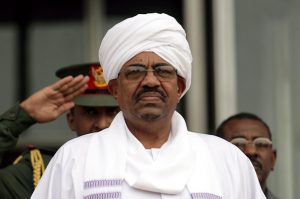 Omar Al Bashir: Born in 1944, Omar Hassan Ahmad Al Bashir served as the seventh president of Sudan for 30 years from 1989 to 2019 and is founder of the National Congress Party (NCP). He came to power in 1989 when he led a military coup that ousted former prime minister Sadig Al Mahdi. In 2009, the International Criminal Court (ICC) issued an arrest warrant for Al Bashir for crimes against humanity, war crimes and genocide in Darfur. When protests began in December 2018, Al Bashir faced large-scale protests, which demanded his removal from power. On 11 April 2019, Al Bashir was ousted in a military coup d’état, which brought the Transitional Military Council (TMC) to power. According to TMC, Al Bashir is currently in Kobar prison in Khartoum.
Omar Al Bashir: Born in 1944, Omar Hassan Ahmad Al Bashir served as the seventh president of Sudan for 30 years from 1989 to 2019 and is founder of the National Congress Party (NCP). He came to power in 1989 when he led a military coup that ousted former prime minister Sadig Al Mahdi. In 2009, the International Criminal Court (ICC) issued an arrest warrant for Al Bashir for crimes against humanity, war crimes and genocide in Darfur. When protests began in December 2018, Al Bashir faced large-scale protests, which demanded his removal from power. On 11 April 2019, Al Bashir was ousted in a military coup d’état, which brought the Transitional Military Council (TMC) to power. According to TMC, Al Bashir is currently in Kobar prison in Khartoum.
Ahmed Awad Ibn Auf: Born in 1957, Lieutenant General Ahmed Awad Ibn Auf served as the de facto head of Sudan and former head of the ruling TMC for one day from 11 to 12 April 2019 after taking part in the 2019 coup d’état, which overthrew Al Bashir. Ibn Auf formerly served as the minister of defense from August 2015 to April 2019, and the first vice president of Sudan from February to April 2019.
Abdel Fattah Abdelrahman Al Burhan: Born in 1960, Lieutenant General Abdel Fattah Abdelrahman Al Burhan is currently serving as de facto head of Sudan as the chairman of TMC. He assumed power as the head of the ruling TMC after former Chairman Ahmed Awad Ibn Auf resigned and transferred control. He was formerly the General Inspector of the Sudanese Armed Forces (SAF).
Mohamed Hamdan Dagalo (Hemedti): Born in 1975, General Mohamed Hamdan Dagalo, known as Hemedti, is the head of the Rapid Support Forces (RSF), deputy head of TMC and leader of the Janjaweed.
Sadig Al Mahdi: Born in 1935, Sadig Al Mahdi is a well-known political and religious figure who was prime minister of Sudan from 1966 to 1967 and again from 1986 to 1989. He was removed both times by military coups, one that brought Al Bashir to power. He is the head of the National Umma Party and Imam of the Ansar, a Sufi order that pledges allegiance to religious leader Muhammad Ahmad, who claimed to be Al Mahdi, the messianic saviour of Islam.
National Congress Party (NCP): NCP has governed Sudan since it was founded out of the National Islamic Front (NIF) in the mid 1990s. Al Bashir led NCP and after the 2019 coup d’état, the NCP was dissolved.
Transitional Military Council (TMC): Established on 11 April 2019, the TMC is the current military regime ruling Sudan, and is headed by Abdel Fattah Al Burhan, after Ahmed Awad Ibn Auf resigned as leader one day following the 2019 coup d’état, which overthrew Al Bashir. The TMC has been negotiating with the FFC to discuss the interim and transition period before elections take place.
Sudanese Professionals Association (SPA): Established in 2012 and officially registered in 2016, the SPA is an umbrella association of 17 different Sudanese trade unions of doctors, pharmacists, journalists, teachers, lawyers, engineers and more. Since December 2018, the SPA has been leading anti-government protests against Al Bashir, his regime and now, the TMC and its leaders. Many of its members are still unknown. However, one of the most known spokespersons of the SPA is Mohamed Nagi Alasam. www.sudaneseprofessionals.org
Forces for Freedom and Change (FFC): Also referred to as the Declaration of Freedom and Change Forces or the Alliance of Freedom and Change (AFC), the FFC is one of the leading opposition alliances, along with SPA. The alliance has been leading negotiations with the TMC, regarding an interim civilian government before general elections take place.
Rapid Support Forces (RSF): Led by Hemedti, the RSF are paramilitary forces primarily composed of the Janjaweed militias. The RSF are administered by the National Intelligence and Security Service (NISS) and commanded by the Sudanese Armed Forces (SAF) during military operations. Along with other paramilitary forces, the RSF carried out the Khartoum massacre on 3 June 2019, which left at least 100 people dead and over 300 injured.
Janjaweed: Led by Hemedti, the Janjaweed are a militia that originate from and mostly operate in western Sudan and eastern Chad. They are responsible for massacres in Darfur, Nuba Mountains, South Sudan and mostly recently, Khartoum.
National Intelligence and Security Service (NISS): The intelligence service of Sudan and most powerful police body in the country. Previously led by Salah Gosh until the 2019 coup d’état, NISS is currently led by Lieutenant General Abu Bakr Mustafa. In addition, NISS operates the RSF. Since the uprising began on December 2018, along with other paramilitary forces, the NISS carried out several attacks on the peaceful protests, leaving at least 100 protesters dead, hundreds injured, and more than 1,000 arrested (prior to the Khartoum massacre on 3 June 2019).
Sudanese Armed Forces (SAF): The armed forces of Sudan, consisting of more than 100,000 personnel, composed of land forces, Sudanese navy, Sudanese Air Force and other defence forces.
Need-to-know vocabulary:
Kizan/Kezan (كيزان) – Plural; Koz/Kuz (كوز) – Singular: Describes the former Sudanese president Omar Al Bashir and his regime, members of the Muslim Brotherhood in Sudan, members of the National Congress Party (NCP), and the currently ruling Transitional Military Council (TMC)
Tatcher/thatcher (ثاتشر/تاتشر): Refers to the cars or trucks driven by NISS and other paramilitary forces
Tasgut Bas (تسقط بس): The slogan of the revolution, meaning “Just Fall, That’s All!”
Alamn (الأمن): Refers to Sudan’s intelligence service specifically the National Intelligence and Security Service (NISS)
Bomban (بمبان): Tear gas
Kandakat (كنداكات) – Plural; Kandaka (كنداكه) – Singular: Strong women or queens; historically women who ruled during the Kingdom of Kush were called Kandakas
Flags of Sudan
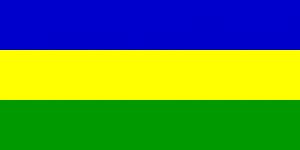 The former flag is recognised as the first flag of Sudan, which was originally in use since 1954 but officially adopted as the flag of Sudan on 1 January 1956 until 1970. Pursuing pan-Arabist ideologies, when military officer Gaafar Nimeiry came to power in 1969 as president of Sudan after a military coup, Sudan officially adopted the current Sudanese flag in 1970. Read more on ‘Why is the First and Former Flag of Sudan Resurfacing on Social Media?’
The former flag is recognised as the first flag of Sudan, which was originally in use since 1954 but officially adopted as the flag of Sudan on 1 January 1956 until 1970. Pursuing pan-Arabist ideologies, when military officer Gaafar Nimeiry came to power in 1969 as president of Sudan after a military coup, Sudan officially adopted the current Sudanese flag in 1970. Read more on ‘Why is the First and Former Flag of Sudan Resurfacing on Social Media?’
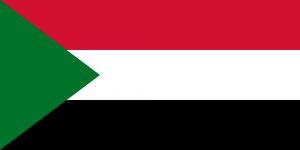 The current flag of Sudan was adopted on 20 May 1970, consisting of a green triangle at the hoist with horizontal red, white and black tricolour. Red, white, black and green are called the pan-Arab colours, which stand for Arab unity and independence, and have been linked to Arabs and Islam for centuries. Using a subset of the pan-Arab colours, the flag is based on the Arab Liberation Flag shared by Egypt, Iraq, Syria and Yemen.
The current flag of Sudan was adopted on 20 May 1970, consisting of a green triangle at the hoist with horizontal red, white and black tricolour. Red, white, black and green are called the pan-Arab colours, which stand for Arab unity and independence, and have been linked to Arabs and Islam for centuries. Using a subset of the pan-Arab colours, the flag is based on the Arab Liberation Flag shared by Egypt, Iraq, Syria and Yemen.
Other need-to-know facts about Sudan
- US lifted its 20-year trade sanctions on Sudan in October 2017.
- South Sudan split from Sudan in 2011, losing three-quarters of its oil output.
- During the Arab Spring in 2011, sporadic protests took place in Sudan, which is known as the Sudanese Intifada. It began in January 2011 and resumed until 2013. However, it was not as successful as the current revolution.
- The current Sudan revolution is the country’s third revolution. Sudan has been successful in two popular uprisings. The first took place in 1964, known as the ‘October Revolution’, which ousted Sudan’s first military dictator and president, General Abboud. The second occurred in 1985, which toppled another military dictator, Jafar Numeiri, who had come to power in a coup in 1969.

